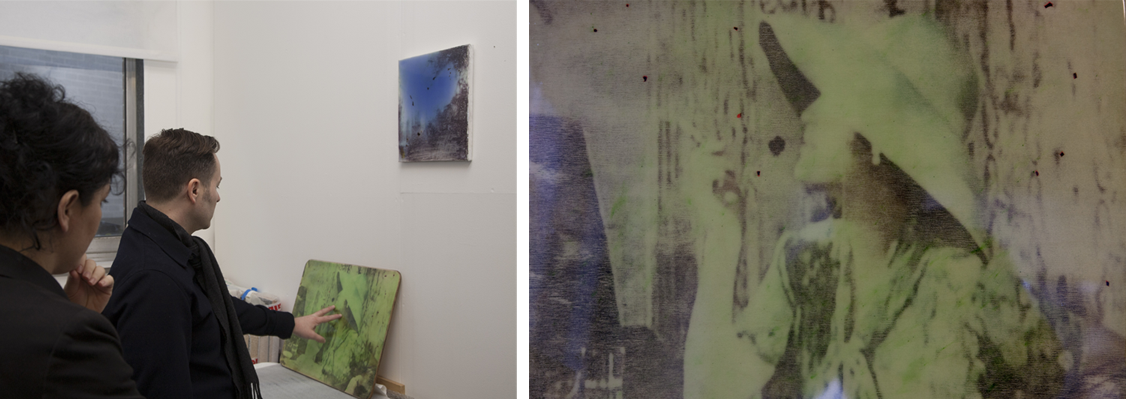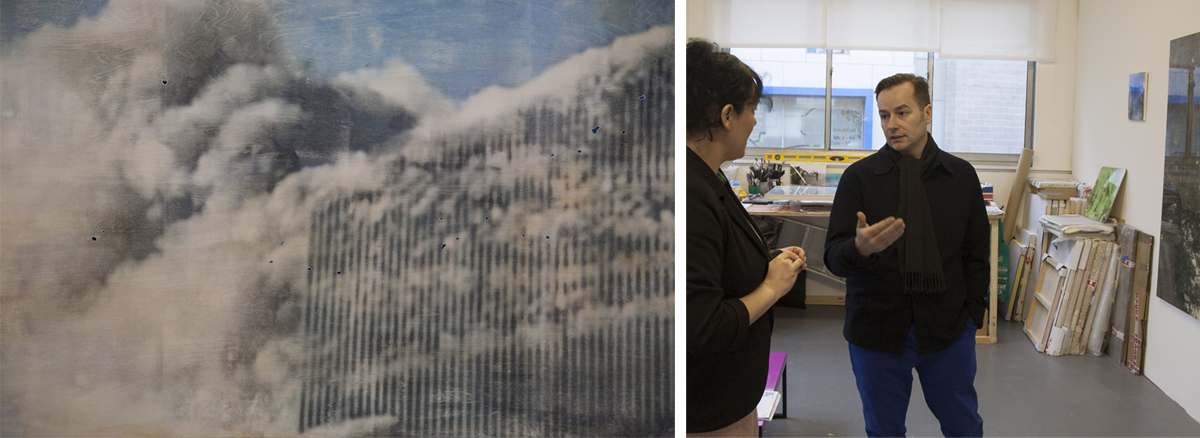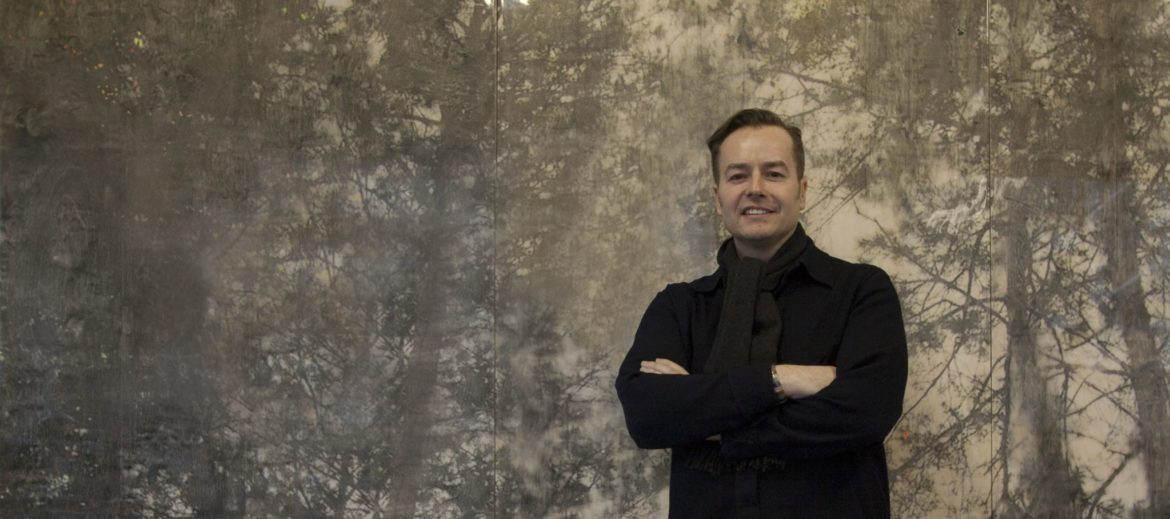“I find it difficult when people ask me what I do, I feel a little guilty telling them I’m an artist, as though it isn’t really work … perhaps it’s because I enjoy it so much. .”
When members of the Brit Es team visited the London Art Fair 2013, our interest in the work of a certain artist named Ernesto Cánovas was roused; a Catalan based in London, he is a perfect profile for the first issue of our magazine.
Getting in touch with him and setting up an interview was easy. He’s a fine example of an artist with his feet on the ground, and if anything could define Ernesto Cánovas as a person and as an artist, it’d be sincerity, spontaneity, elegance, and last but not least, his great sense of humour and aestheticism.
From Barcelona to Berlin, onto Edinburgh and now London, do you have any plans to settle down here or do you have your next stop in mind?
Berlin is a city which oozes culture in every nook and cranny, I wouldn’t mind living there for a while, but at the moment I’ve only shown my work there a few times. I’ve lived in New York and I’d like to go back there but getting a visa is complicated. For the moment, London’s my town but I haven’t ruled out returning to Barcelona or wherever life takes me… You never know!

One day you go to the studio to start experimenting. The minutes stretch into days, the days stretch into weeks and before you know it you’ve spent 5 years experimenting.
How do you like to define yourself or to be defined? As an illustrator, a painter, a designer, an artist in general, or do you not like to attach adjectives to yourself?
I’m not a fan of adjectives. In fact I find it difficult when people ask me what I do: I feel a little guilty telling them I’m an artist, as though it isn’t really work (even though I get up at 7am every day). Perhaps it’s because I enjoy it so much.
Is there anyone or anything you would call your “role model or inspiration”?
For me, inspiration comes from everything around me, at the metro stop waiting for a train, reading the paper, watching the news on TV, browsing the Internet and, of course, cinema which is a huge influence. When it comes to my abstract paintings, I take my inspiration more from architecture, electric music, or even the way fashion designers like Yohji Yamamoto or Issey Miyake cut their fabric… absolutely anything can come to inspire you.
As for “inspiring role model”… oooph, the list is never-ending but I can give you some key names… Gerhard Richter, Luc Tuymans, Joan Miró… Friedrich… Turner, and I have a great admiration for Japanese artists from, Hokusai to Murakami.
Were you given some colouring pencils as a child or a camera as a teenager? Where does your artistic calling come from?
In my house, my father is a great amateur painter and my brother had a good hand for technical drawing… So I would “steal” my father’s brushes and my brother’s Rotrings and like any other kid growing up in the 80s, comic books were a big influence, from Mortadelo and Filemón to the Cimoc and Zona 84 collections which my cousin Jorge owned. My interest in cameras came later when I discovered jumble sales and Sunday Markets… I have boxes and boxes of cameras… I’ve stopped collected them now, it was getting crazy. I’d like to add that I started painting, well studying painting, at the age of 35, and I encourage anyone to try it because I honestly believe that it’s never too late.
So let’s turn to your work. Can you explain your technique to me and why you’ve chosen it?
Well, we could say that part of my photographic technique encompasses many artistic strata: drawing, painting, printmaking, separated by layers of resin which really give a sense of depth.
But the truth is that my technique changes every day, something always comes along which will work in the next painting, like using varnish or natural pigments such as green pepper pulp. It’s a constant search, bordering on obsession…
One day you go to the studio to start experimenting. The minutes stretch into days, the days stretch into weeks and before you know it you’ve spent 5 years experimenting.
With themes like war, death, justice, good and evil, you invite us to reflect on concrete episodes from our past.
Historic events shouldn’t be forgotten and reflecting on these from time to time is a positive thing, not least because it helps us to avoid repeating the mistakes of the past. Today’s events are tomorrow’s history. I believe that human beings are nostalgic by nature, a touch of “vintage nostalgia” isn’t bad but we should be careful not to get too carried away.
I notice that bombs are the focus of a considerable number of your works. Is there some hidden symbolism there?
I’ve always tended to work on one series of paintings at a time and even now I never just jump from one theme to another. The “bombs” or explosions are part of a series which I created in an attempt to open up a dialogue between beauty and destruction, trying to visually change something as horrible and devastating as a nuclear explosion, for example, into an imagine with a certain beauty. I’m not sure whether I managed it! But that was my intention.
When it comes to your portraits, the faces lack facial features. Is that because an expression isn’t necessary to reflect the internal state of the subject?
You’re right in that when it comes to my drawings, the outline and the marks should express the content of the image without the need for detail. In any case, it took me a long time to realise that I wasn’t drawing faces in the majority of paintings, including the figurative ones because… well, I suppose we’d have to ask Dr. Freud about that one…

I’d like to add that I started studying painting at the age of 35, and I would encourage anyone to try it because I honestly believe that it’s never too late.
There’s a certain pessimism to your works, not in the colours or in the forms, which are very lively in some of your pieces, but in the message. Would you agree with that interpretation?
No, because I am an optimistic person. Some paintings reflect the reality of the represented period and this reality isn’t always marvellous; it can go so far as to seem pessimistic, in any case. Although the image is dark, I try to give it a touch of colour symbolising hope.
‘Hidden Truth’ is the title of your latest collection. Are you going to surprise us in the future by expressing in your work some truth which up until now has remained hidden?
The majority of my work is intuitive, sometimes I don’t realise what I’m doing until I look back and reflect upon it… I’ll probably surprise myself!
Tell us about your future projects.
Coming up in the near future I’ve got an exhibition in Munich (Ambacher Contemporary) with my wife and another painter from London, then another exhibition in London and also an individual show in Milan, the date of which hasn’t been confirmed yet. I’m going to keep on painting and plan to incorporate some 3D elements into my work and we’ll see what happens!
Any suggestions or advice for the Brit Es team as we embark on the magazine, our own creative project? You’re the first artist to be interviewed for our magazine, you’re sort of like our patron!
My advice to you would be originality, sincerity and drive… and as your patron, I wish you success, the very best of luck, and Rock and Roll!
And this advice he gives us is exactly what characterises Ernesto Cánovas’s personal and professional success – we’ll take it to heart since he’s clearly leading by example! As for Rock and Roll, we’ll take that one for granted.
[su_note note_color=”#eaeae9″]Translated by Ben Ffrancon Davies[/su_note]

